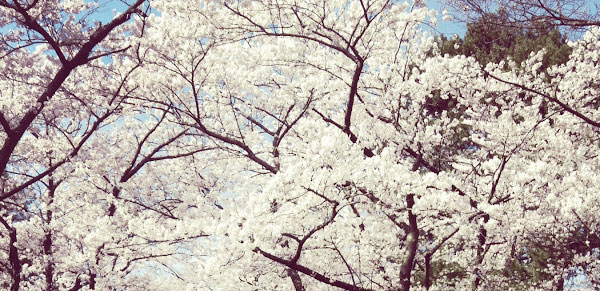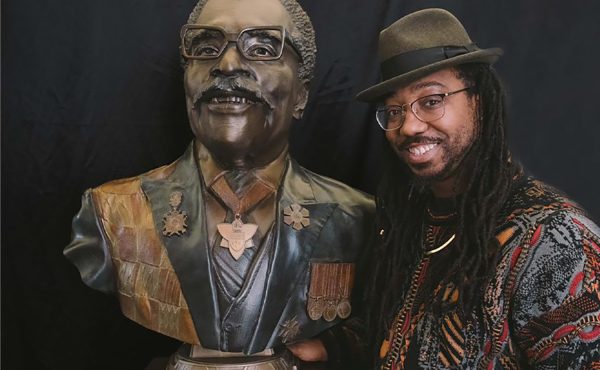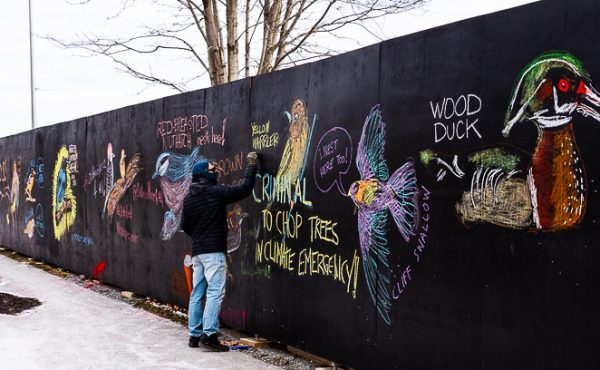It all started in Japan more than a thousand years ago. People of the Imperial Court began to hang out under cherry trees every spring, taking advantage of the brief period when the blossoms burst into spectacular bloom. From there, the tradition spread to samurai culture and eventually all sorts of people in Japan were doing it. Today, the whole country keeps a close eye on “the cherry blossom front” as warm weather arrives in the south and then sweeps north across the islands. During the week or two when the flowers are open, millions of people all over Japan have picnics under the trees, take photos, get drunk, fall in love. They call it Sakura Hanami.
The tradition came to Toronto in 1959. That year, the Japanese ambassador gave us two thousand sakura trees — a gift from the people of Tokyo to the people of Toronto. It was a thank you for welcoming so many Japanese-Canadians to the city in the wake of the Second World War.
By then, the Canadian government had a long history of official racism against Japanese immigrants. And it had only gotten worse during the war. Mackenzie King’s Liberal government used the War Measures Act to brand anyone of Japanese descent as an enemy alien. In British Columbia, tens of thousands of Japanese-Canadians were rounded up and shipped off to internment camps. They called it an “evacuation”.
It didn’t end there. After the war, the government deported thousands of people “back” to war-ravaged Japan — even though half of them had been born in Canada. Those who weren’t deported were forced to move away from the West Coast. As one racist cabinet minister put it: “No Japs from the Rockies to the seas.”
Many of them came east to Toronto. And here, they found plenty of racism too. During the war, Toronto’s mayors were openly hostile to the new arrivals. The City refused to give any licenses to any Japanese-Canadian businesses. On their way into town, some new Torontonians decided it was best to avoid Union Station — for fear that anti-Japanese hysteria could turn the crowds ugly.
But there were also plenty of Canadians who were horrified by the government’s racist policies. In Toronto, the Cooperative Committee on Japanese Canadians pulled together progressive organizations from all over the country in a public campaign against the government’s bigotry. There were petitions, pamphlets, public meetings, sermons, fundraisers, letters to MPs, briefs to parliament, and court cases. The reaction from Canadians was overwhelmingly supportive. It took years, but eventually the government was forced to back down. In 1947, they abandoned the deportation policy. In 1949, Japanese-Canadians were allowed to move back to B.C. — and, finally, to vote.
Ten years later, those two thousand sakura trees were planted in Toronto as a way to remember — and since then, the Japanese government has continued to give them to us as gifts. They bloom all over the GTA and the Golden Horseshoe. You can find them at York University, at U of T, at McMaster, at Exhibition Place, in the Royal Botanical Gardens of Hamilton and Burlington, at Niagara Falls…
But most famously, you can find them in High Park. A hundred trees were planted there in 1959 — on the hillside overlooking the eastern bank of Grenadier Pond. And since then, dozens more have been added. Today, during those brief spring days when the trees burst into pink and white, thousands of Torontonians get to enjoy our own Sakura Hanami, in awe of the beauty we’ve been given from Japan.
The planting of those trees was, of course, far from the end of anti-Japanese racism in Toronto. At the time those first sakura were planted, there were still no new Japanese immigrants allowed into the country. There wouldn’t be any more welcomed as new Canadians until 1967. But Torontonians continued to play an important role in the fight to make the government acknowledge what had happened — spearheaded by the efforts of Japanese-Canadian organizations founded in T.O. and backed by an unanimous motion from City Council. Finally, in 1988, the government of Canada formally apologized, compensated the survivors and cleared the names of those who had refused to be sent away. That very same year, the War Measures Act was repealed and replaced so that no Canadian can ever be legally rounded up on the basis of race again.
The sakura of High Park are about to reach peak bloom. You can get updates from the High Park website or by liking the blossoms on Facebook.
A version of this post originally appeared on the The Toronto Dreams Project Historical Ephemera Blog. You can find more images, sources, links and related stories there.





